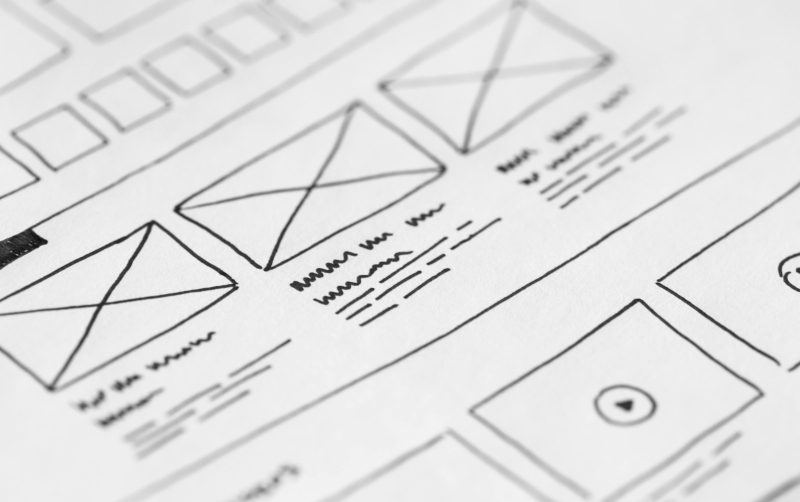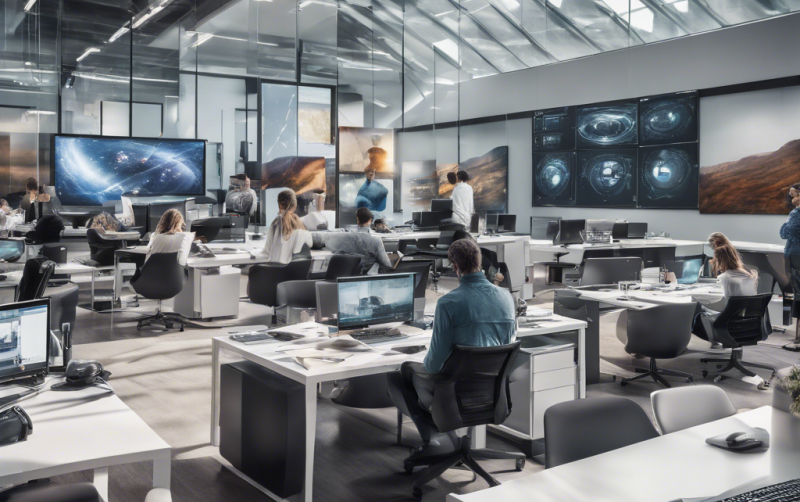Overview of Key UI/UX Design Trends for 2025

Minimalism with Intent
Minimalism remains an enduring design philosophy, yet in 2025, it transcends mere visual simplicity to prioritize pragmatic functionality. This approach to minimalism emphasizes mental clarity, reducing cognitive strain and enabling users to swiftly locate essential elements. It eschews superfluous embellishments, instead amplifying utility and user-centricity.
Illustrations of this ethos can be seen in platforms such as Google and Airbnb, where streamlined interfaces and intuitive navigation take center stage, stripping away distractions to foreground essential content.
Immersive Realms via AR and VR
Augmented Reality (AR) and Virtual Reality (VR) are revolutionizing the digital landscape by crafting profoundly immersive experiences. Whether enabling virtual garment trials or orchestrating VR-powered conferences, these technologies dissolve boundaries between the tangible and the digital.
For instance, e-commerce platforms will empower users to visualize products within real-world settings, while educational applications harness VR to offer experiential, hands-on learning. Seamless, intuitive interactions will underscore the evolution of these boundary-pushing interfaces.
Hyper-Personalization Enabled by AI
Artificial Intelligence (AI) is poised to redefine customization in UI/UX, offering dynamic interfaces that evolve in real-time based on individual behaviors, preferences, and contexts. AI’s predictive prowess can preempt user needs, delivering bespoke content—be it tailored newsfeeds or curated product suggestions—before a query is even made.
This trajectory cultivates highly individualized user experiences, imbuing platforms with a sense of intimacy and efficiency. Industry pioneers like Spotify and Netflix exemplify this sophistication, and advancements will further refine these adaptive experiences.
The Next Evolution of Dark Mode
Dark mode has transitioned from an aesthetic indulgence to an essential design element. By 2025, dark interfaces will evolve with nuanced enhancements, such as refined gradients and meticulous contrasts, optimizing readability, minimizing eye strain, and conserving device energy.
Moreover, accessibility will become integral, ensuring that dark-themed designs accommodate visually impaired users, making digital interactions universally inclusive and visually harmonious.
Microinteractions: The Subtle Art of Delight
Microinteractions—those subtle, nuanced animations that enrich user journeys—will persist as vital elements of UI/UX design. From illuminating buttons upon interaction to animating swipes that indicate progress, these diminutive details imbue interfaces with charm and responsiveness.
In 2025, these animations will further prioritize user feedback, highlighting actions or drawing attention to errors, creating fluid and gratifying digital experiences that resonate with users.
Conversational Fluidity with Voice User Interfaces
Voice User Interfaces (VUI) are ascending as smart speakers and digital assistants become omnipresent. By 2025, VUIs will transcend basic commands, incorporating conversational AI for more natural and context-aware exchanges.
Crafting effective VUIs will necessitate careful calibration of tone, clarity, and contextual adaptability, ensuring effortless navigation. For instance, smart home ecosystems will seamlessly integrate voice commands, enabling hands-free control with ease.
Prioritizing Inclusive and Accessible Design
Accessibility will transform from a secondary consideration to a cornerstone of digital design. Inclusive frameworks will ensure that digital products cater to all individuals, including those with disabilities, adhering to global standards like WCAG (Web Content Accessibility Guidelines).
Features such as voice-to-text transcriptions, optimized keyboard navigation, and enhanced color contrasts will foster usability for visually impaired individuals, underlining a commitment to universal access and social equity.
Revitalizing Depth: 3D Elements and Neumorphism
Three-dimensional elements will enrich digital designs, imbuing them with depth and tactile realism while maintaining a balanced aesthetic. Subtle animations and textures will breathe life into interfaces, especially within gaming and interactive realms.
Simultaneously, neumorphism—a synthesis of skeuomorphism and flat design—will reemerge, offering soft, shadowed visuals that are both contemporary and engaging, bridging the gap between digital and tangible experiences.
Visualizing Complexity: Data Simplified
As data grows increasingly intricate, the demand for compelling visualizations surges. UI/UX designers will focus on crafting intuitive representations through interactive graphs, dynamic charts, and visually engaging infographics.
For instance, financial platforms will provide real-time insights into spending behaviors, while health applications will transform fitness data into visually stimulating progress trackers, empowering users with actionable insights.
Sustainability Takes Center Stage
Sustainability will emerge as a pivotal consideration in digital design. Lightweight websites and applications that minimize resource consumption will gain prominence, championing eco-friendly practices through reduced server loads and enhanced performance.
This shift mirrors a broader societal emphasis on environmental stewardship, appealing to eco-conscious users and fostering brand loyalty through responsible digital innovation.
Super Apps: The All-in-One Ecosystem
Super apps—digital ecosystems encompassing diverse services within a singular platform—are poised to redefine user experiences. Platforms like WeChat and Grab exemplify this trend, seamlessly integrating functionalities ranging from messaging to payments.
The challenge lies in maintaining usability amidst complexity. Designers must prioritize modular structures, intuitive layouts, and clear navigational hierarchies to ensure users are not overwhelmed by the breadth of offerings.
Gesture-Driven Interfaces: Natural Interactions
Gesture-based navigation will flourish, particularly in mobile and wearable technologies. From simple swipes and pinches to advanced motion controls, these interfaces will offer organic, instinctive interactions.
Smart devices such as smartphones, smartwatches, and VR headsets will increasingly rely on gesture-centric designs, enhancing accessibility and hands-free usability for diverse scenarios.
Cross-Platform Synergy
As users engage across an expanding array of devices, maintaining a cohesive experience across platforms will be paramount. Responsive designs, universal icons, and harmonized color schemes will ensure consistency, fostering trust and familiarity.
This uniformity enhances user satisfaction, ensuring seamless transitions between devices while preserving the integrity of brand identity.
Ethical Imperatives in Design
With digital products wielding growing influence, ethical considerations will anchor UI/UX strategies. Transparency, particularly around data usage, will be pivotal, eschewing manipulative tactics such as dark patterns.
Applications will clearly articulate data collection practices, fostering accountability and aligning with user values. Ethical design will not only cultivate trust but also engender enduring user loyalty.
Conclusion
By 2025, the UI/UX landscape will be defined by a symphony of innovation, inclusivity, and sustainability. From AI-fueled customization to AR/VR-powered immersion, these trends will reshape digital interactions, prioritizing meaningful user experiences that resonate deeply. Staying ahead demands an intricate understanding of user behaviors and a steadfast dedication to crafting designs that inspire, engage, and endure.
FAQs
- What is the role of AI in future UI/UX design?
AI will enable dynamic interfaces, personalized user journeys, and real-time content adaptation.
- Why is accessibility becoming a primary focus in design?
Accessibility ensures that products are usable by everyone, reflecting inclusivity and compliance with global standards.
- How will AR/VR change user interactions by 2025?
AR/VR will create immersive, hands-on experiences, from virtual shopping to interactive learning.
- What is Neumorphism, and why is it trending?
Neumorphism combines depth and minimalism, creating realistic and engaging UI elements.
- How do ethical considerations impact modern UI/UX design?
Ethical design promotes transparency and trust, avoiding manipulative practices like dark patterns.






